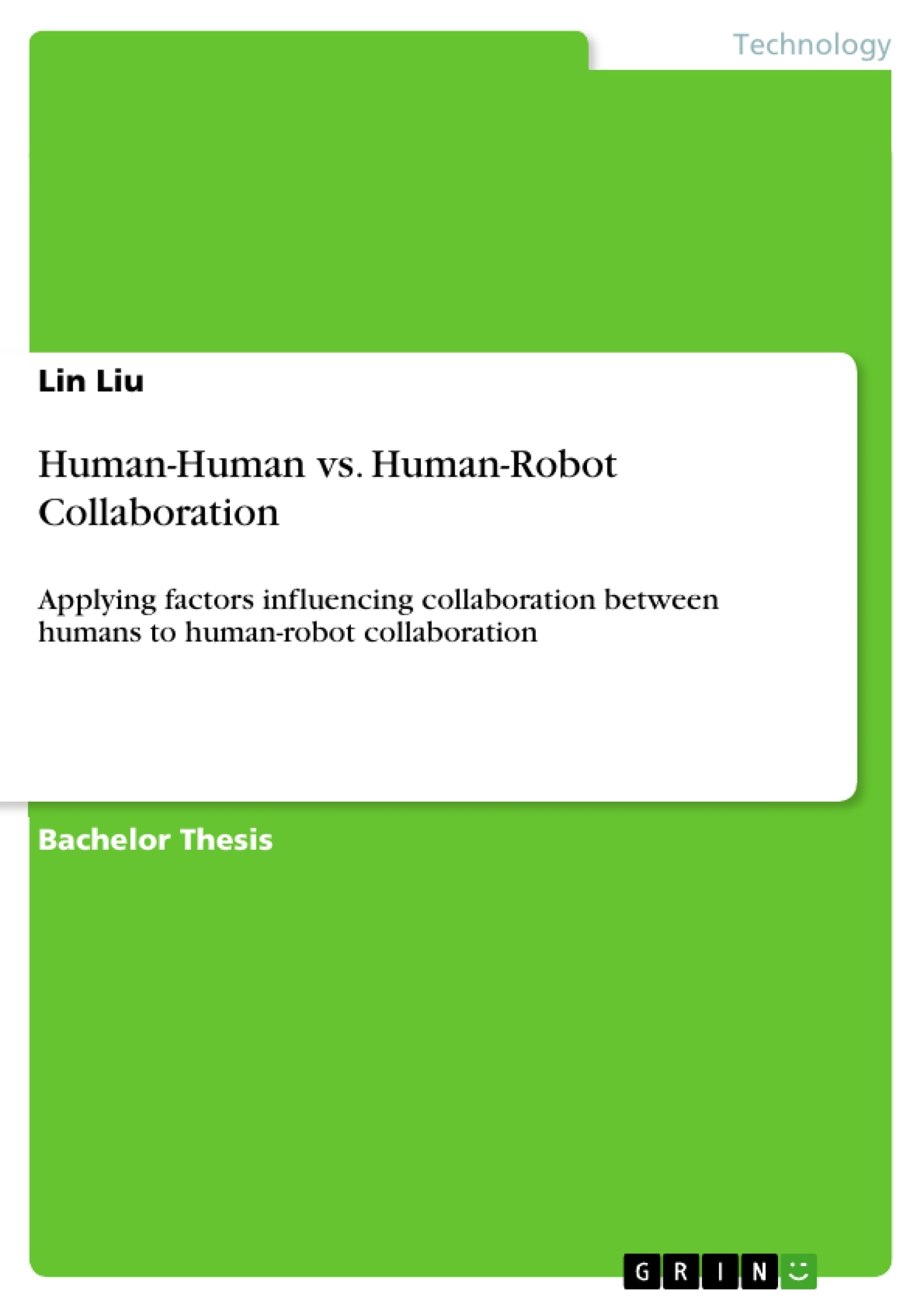The research question of this thesis is: What relevant factors exist that enables humans and robots to collaborate most successfully to ensure optimal process-based workflows?
Human-robot collaboration is a fairly new field of research, and for this reason, there has been barely shed light upon this topic up to today. Thus, the purpose of this work is to investigate and analyze which factors have an impact on the collaborative work of humans. Subsequently, based on this analysis of the relevant parameters, implications can be made for human-robot collaborations to ensure optimal work settings to facilitate effective teaming.
The development of modern industrial robots is advancing year by year. Currently robots are more precise, faster and more powerful than ever before. However, despite these advancements, it is still unlikely that robots will reach the dexterity and intelligence of humans anytime soon. Therefore, at least for the foreseeable future, humans remain irreplaceable in many assembly operations. Still, this does not imply that humans and robots cannot benefit each other. On the contrary, combining the strengths of each individual creates new opportunities for collaboration and collaborative work.
Robots exhibit high precision and repeatability, can handle heavy loads and operate without performance deterioration, even in difficult or dangerous environments. However, robot control systems quickly reach their limits in recognizing and handling unpredictable situations and uncertainties in their environment, which are normally no problem for humans. This is mainly due to the ability of humans to tackle unexpected obstacles, their awareness of a much larger part of the environment than formally declared and lastly humans show more dexterity in complex or sensitive tasks. Despite that humans are more prone to error, stress or fatigue, and their employment underlies strict health and safety regulations.
Robots that interact with human beings are called collaborative robots or cobots for short. The goal of this very human-robot collaboration is not to replace the human but rather to create opportunities for humans and robots to work together towards a common aim by mutually increasing the efficiency and effectiveness of their team performance. This, for example, can be achieved by employing robots in sectors where manual labor is predominant.
Table of Contents
1 Introduction
1.1 Research question
1.2 Method
1.3 Structure
2 Overview of human-human collaboration
2.1 Collaboration
2.2 Team Development
2.3 Teams
2.4 Teamwork
3 Factors affecting team performance
3.1 Adaptability
3.1.1 Coordination
3.1.2 Backup behavior
3.2 Communication
3.3 Mutual trust
3.4 Shared understanding
3.4.1 Groupthink
3.5 Team orientation
3.6 Team leadership
3.7 Team composition and characteristics
3.7.1 Team Size
3.7.2 Team Diversity
3.7.3 Personality types
4 Implications for human-robot collaboration
4.1 Adaptability
4.2 Communication
4.3 Trust
4.3.1 Appearance
4.4 Shared understanding
5 Conclusion and Outlook
6 Bibliography
7 Table offigures
- Citation du texte
- Lin Liu (Auteur), 2019, Human-Human vs. Human-Robot Collaboration, Munich, GRIN Verlag, https://www.grin.com/document/458072
-

-

-

-
Téléchargez vos propres textes! Gagnez de l'argent et un iPhone X. -

-
Téléchargez vos propres textes! Gagnez de l'argent et un iPhone X. -

-
Téléchargez vos propres textes! Gagnez de l'argent et un iPhone X. -

-
Téléchargez vos propres textes! Gagnez de l'argent et un iPhone X. -

-
Téléchargez vos propres textes! Gagnez de l'argent et un iPhone X. -

-
Téléchargez vos propres textes! Gagnez de l'argent et un iPhone X. -

-
Téléchargez vos propres textes! Gagnez de l'argent et un iPhone X. -

-
Téléchargez vos propres textes! Gagnez de l'argent et un iPhone X. -

-
Téléchargez vos propres textes! Gagnez de l'argent et un iPhone X. -

-
Téléchargez vos propres textes! Gagnez de l'argent et un iPhone X.

